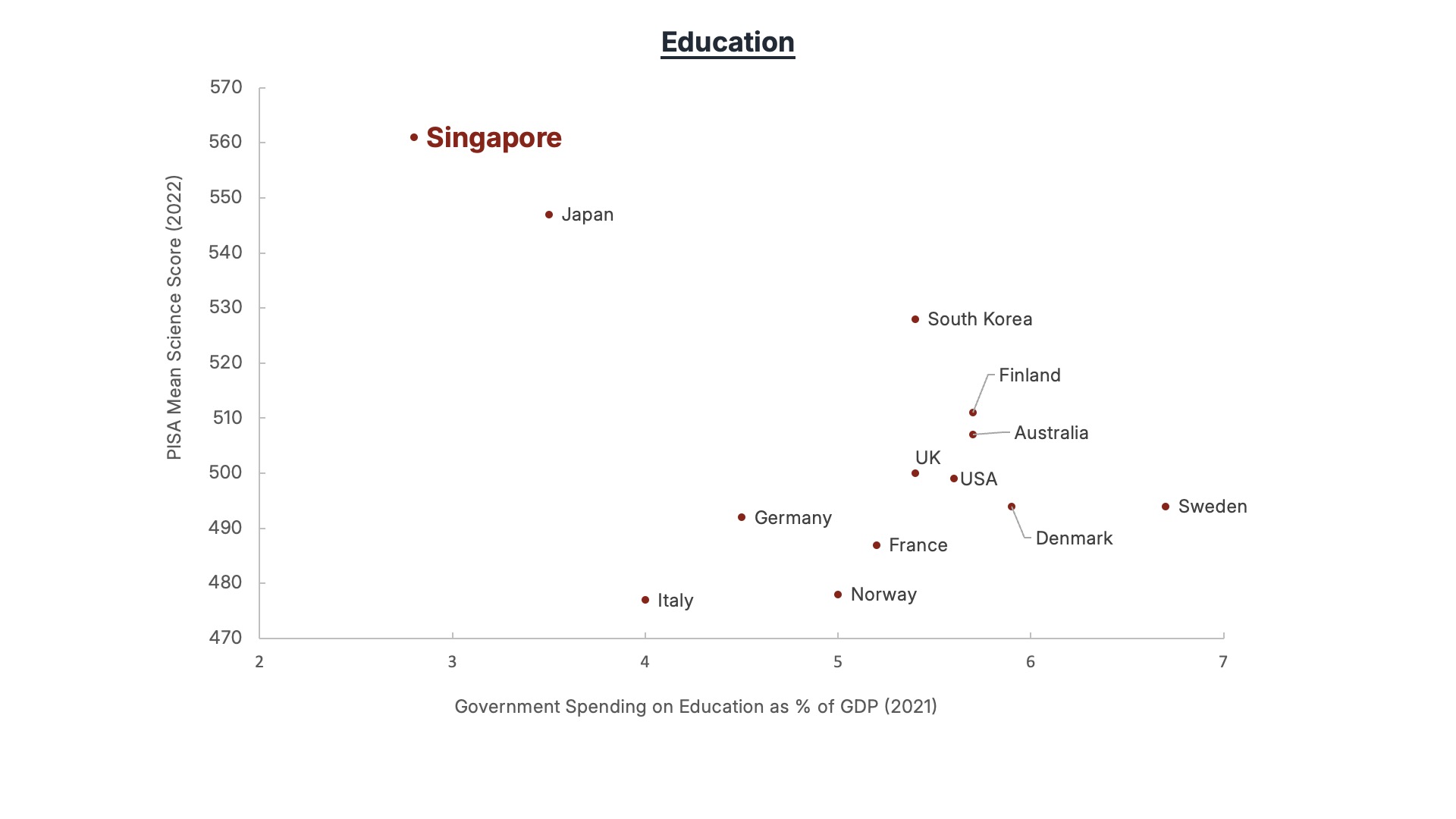Fiscal Policies
To enable macroeconomic stability, support economic growth and promote social equity, through maintaining a balanced budget, investing for the future and ensuring a fair and progressive fiscal system.
On this page
Why do fiscal policies matter?
Fiscal policies are about how a government raises revenue (through taxes and other sources) and how it spends it. As a small country with no natural resources, stewarding our public finances well is critical to our survival and success. Our fiscal policies are designed to support the following key objectives:
Ensuring fiscal sustainability
Supporting growth
Promoting equity
How do we ensure fiscal sustainability?
We aim to run balanced budgets over the long term. This means planning for both current and future needs when designing our fiscal policies.
How do we plan for the long term?
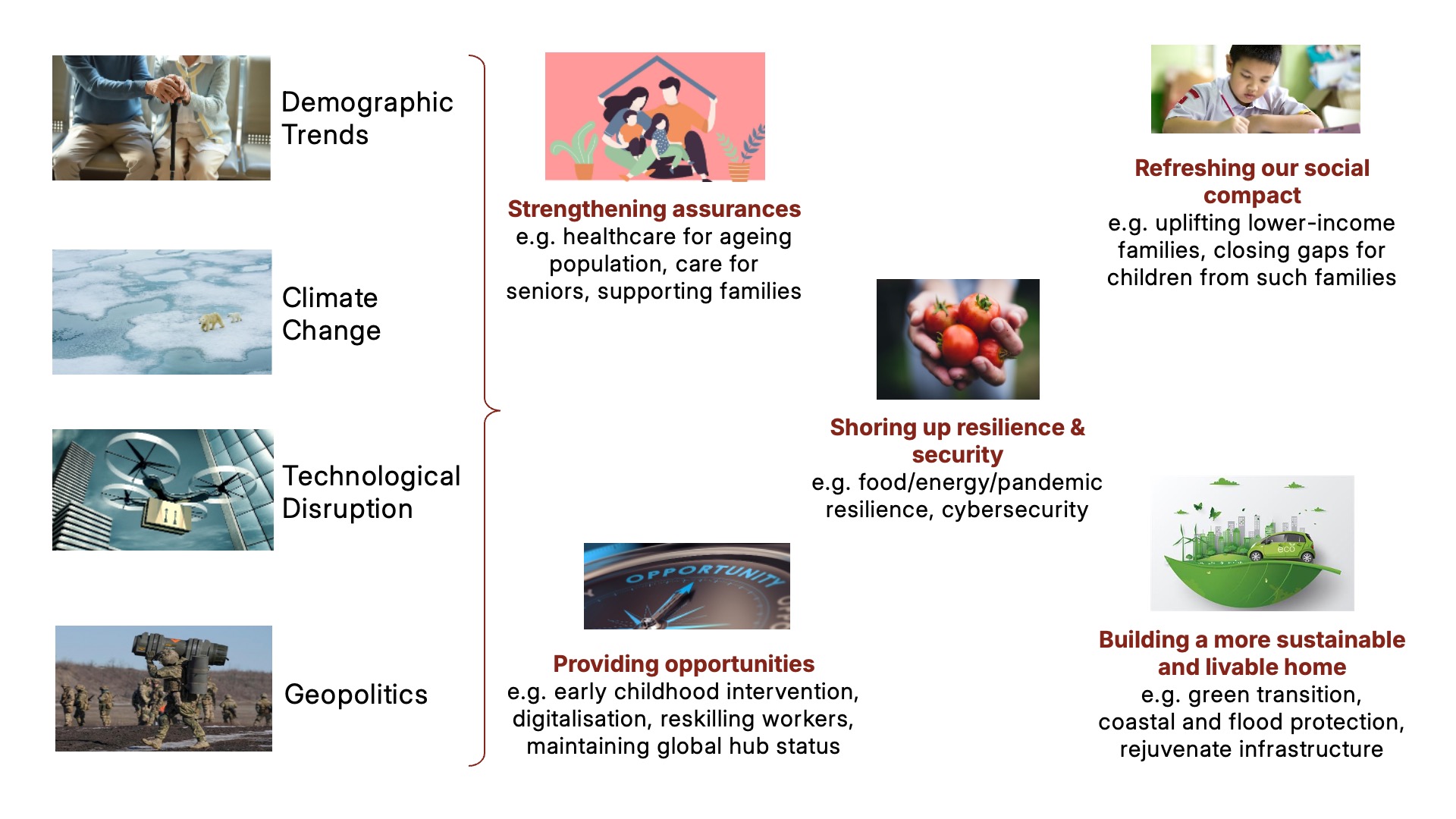
Continued significant demands on fiscal resources to manage longer-term trends and secure a stronger future (Note: Not an exhaustive list of trends or policy priorities)
Fiscal policies in Singapore are characterised by a strong long-term orientation. We prepare early for challenges such as an ageing population, climate change and technological disruptions. Doing so enables us to intervene effectively upstream, avoid more costly interventions downstream and provides time for our society and economy to adjust to the challenges.
Several new spending priorities include:
Ensuring affordable and accessible health and aged care
Investing in early childhood education and continuing education and training
Strengthening retirement adequacy
Renewing our city infrastructure
Managing the green transition
Improving our economic competitiveness
Protecting ourselves against new security threats
Read how the Forward Singapore exercise helps us in our longer-term planning.
What do we spend on?
We focus our public spending on public goods and infrastructure that enable our people and businesses to thrive and grow. We invest heavily in skills, education and infrastructure to develop our people and lay the foundations for long-term economic growth. We also commit a steady amount of spending on security to safeguard our way of life.
💡 Did you know?
Social spending now accounts for about half of the Government’s total expenditure. This reflects our commitment to support vulnerable groups and strengthen our social compact.
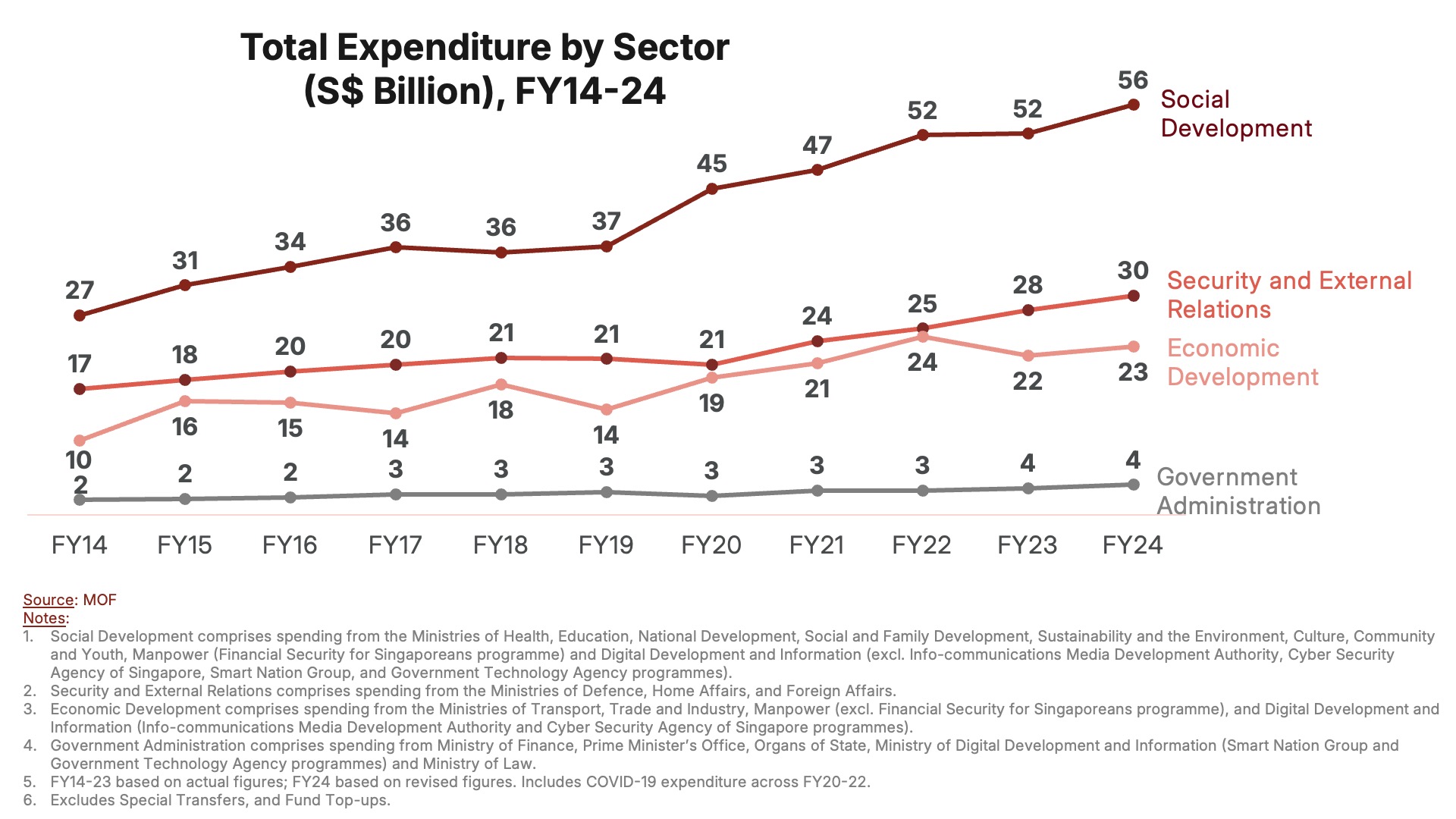
How do we spend?
We focus on cost-effective spending, which means to achieve strong outcomes while maintaining a light fiscal burden on taxpayers. Singapore's Government expenditure (as a share of GDP) is among the lowest across advanced economies. Nonetheless, we have consistently achieved good outcomes in areas such as healthcare and education.
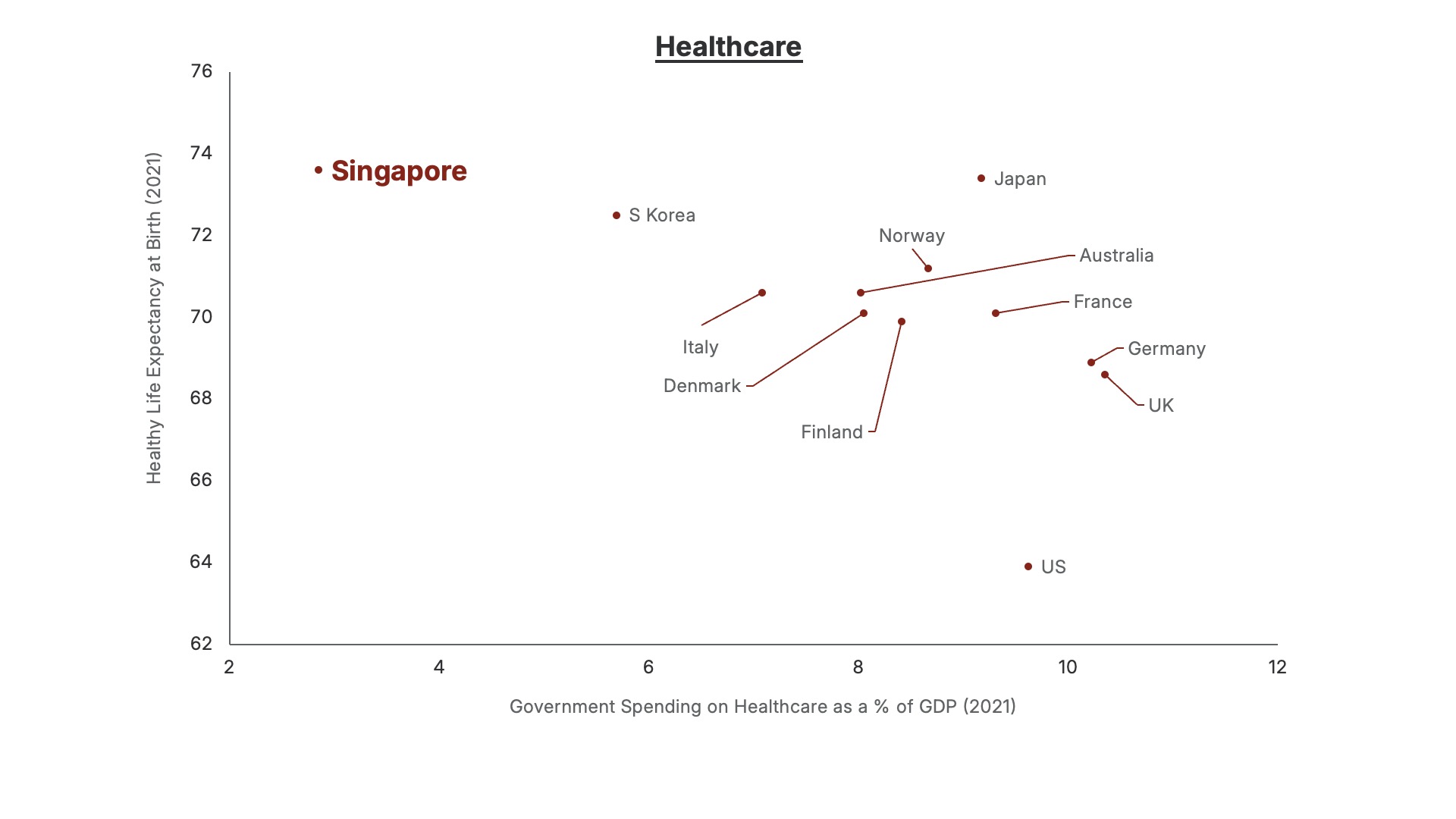
How do we use our resources responsibly for the next generation?
Over the years, Singapore has been prudent and disciplined in building up our reserves.
Our reserves have allowed us to respond quickly and decisively to crises such as the COVID-19 pandemic by supporting Singaporeans and our workers. Unlike many other countries, our reserves have allowed us to do so without borrowing heavily and passing on the financial burden to future generations.
We invest our reserves to generate steady investment returns. Part of the investment returns supplement our annual budget through the Net Investment Returns Contribution (NIRC), contributing about 20% to our Government revenue annually.
We must continue to fiscally plan in a responsible and sustainable manner, to ensure that each generation contributes to and benefits fairly from the Budget.
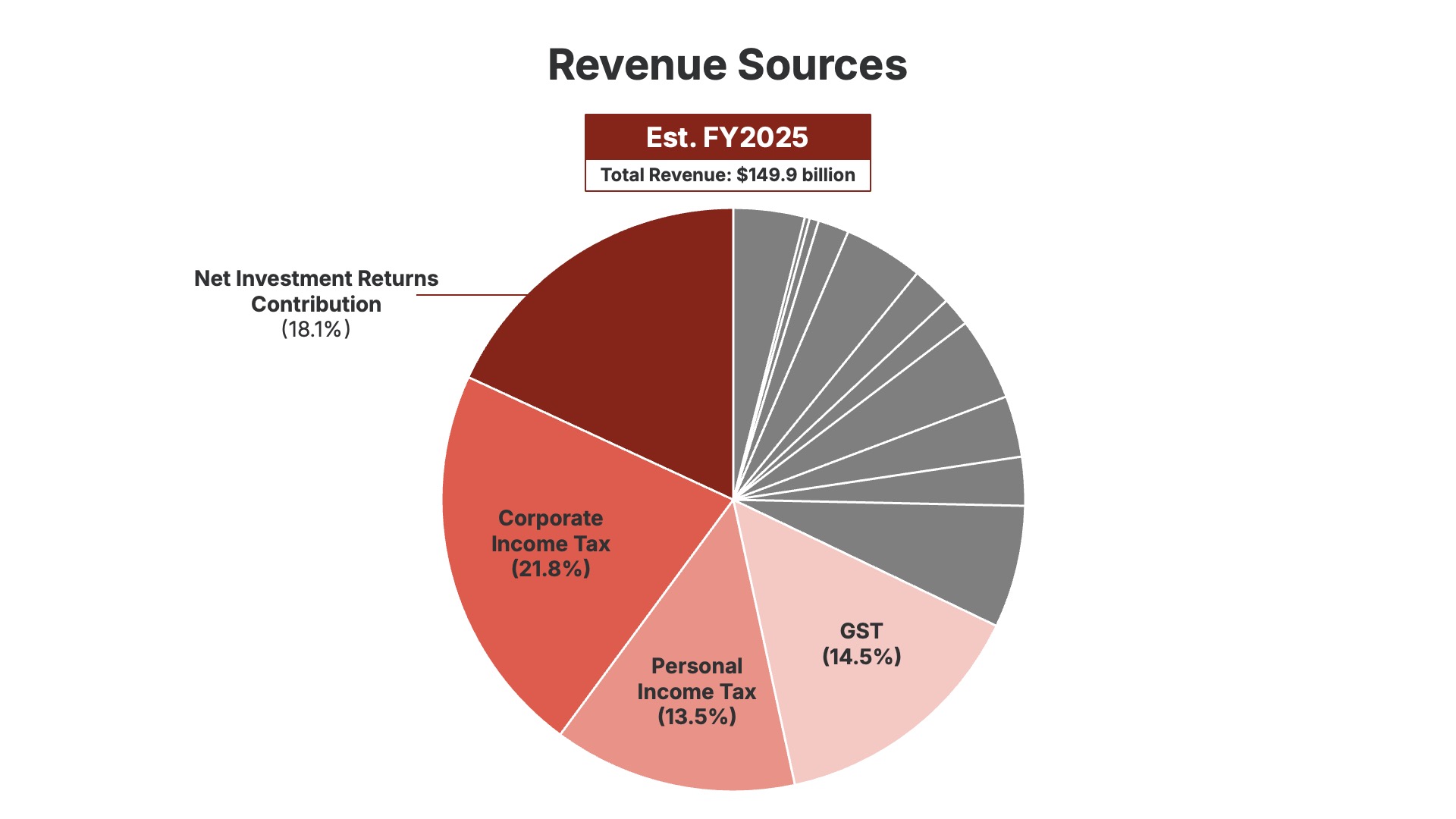
The NIRC makes up about 20% of our government revenue.
Many other advanced economies today spend about 2% of their GDP in debt servicing of accumulated debt, and they cover this cost by collecting taxes (as shown at the lower half of the chart below). In Singapore, we have a steady stream of revenue for spending through our NIRC (as shown in the top half of the chart below) to supplement our tax revenues. This helps to keep our taxes low, and, in turn, helps to support many important areas of expenditure that are important to Singapore’s development and future growth.
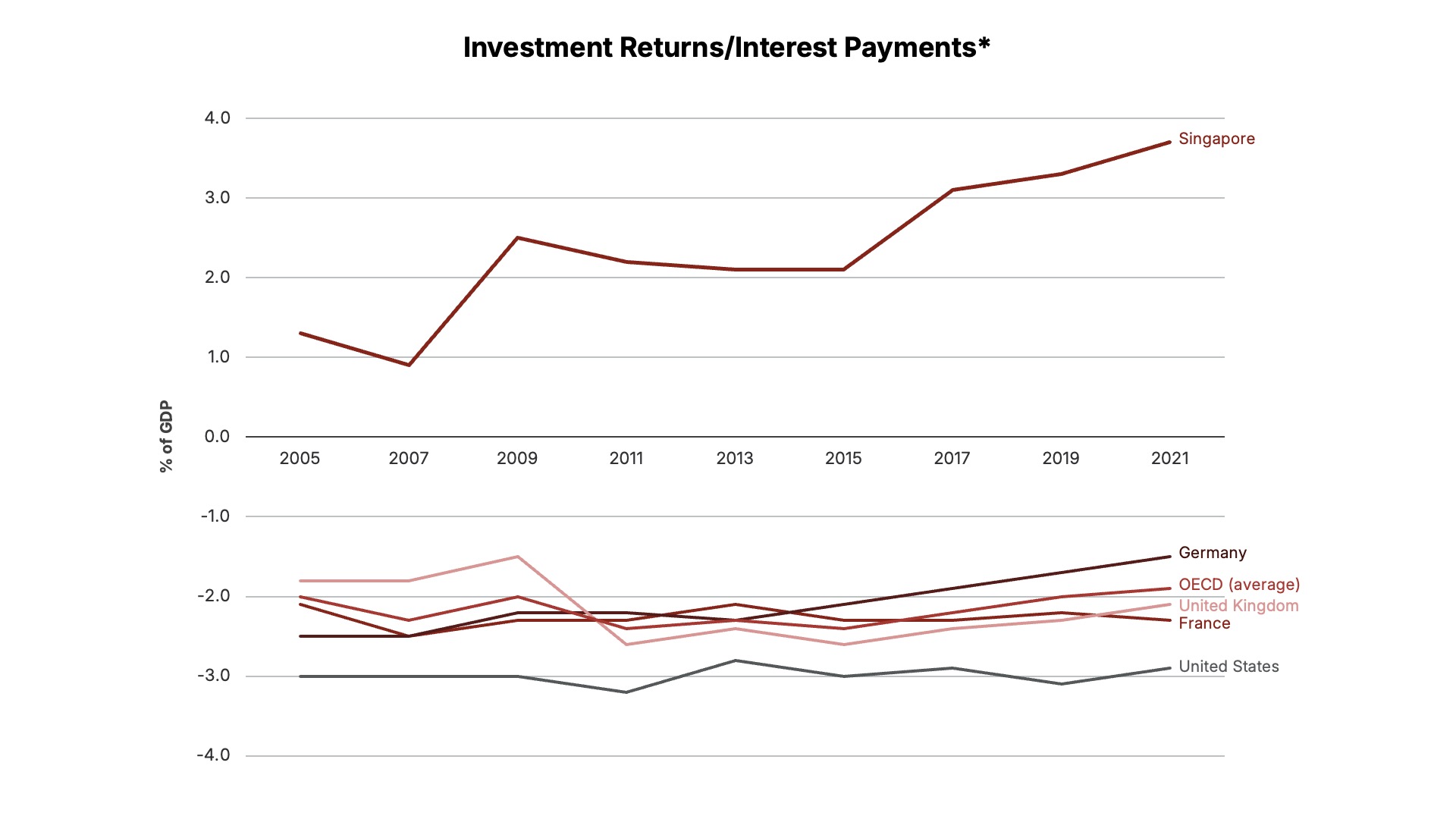
Singapore’s investment returns (as % of GDP) in comparison to other advanced countries’ debt servicing cost (as % of GDP)
How do our fiscal policies support growth?
Where do we invest to support future growth?
Singapore continues to devote about 20% of our budget to development and investment. This includes:
Investing strongly to accelerate innovation and digitalisation – in health and biomedical sciences, climate transition and artificial intelligence
Forging global connections – through trade facilitation and digital economy agreements (such as Networked Trade Platform and Global Innovation Alliance)
Investing in our connectivity – through port and airport infrastructure
How do we invest in our people?
We invest strongly in our people across all life stages, starting from the:
Early years through affordable preschool education, KidSTART programme and high-quality public-school system
Strong tertiary pathways through ITE, polytechnics and universities
Lifelong learning through SkillsFuture to keep our workforce relevant
Through these strategies, all Singaporeans have been able to enjoy the fruits of progress. From 2014 to 2024, households across all income groups have experienced real income growth, with lower-income groups experiencing higher growth.
How do we promote equity and fairness through our fiscal policies?
We seek to achieve a progressive fiscal system that fosters continued social mobility and uplifts the vulnerable in society. It is a constant work in progress.
How does our tax-and-transfer system work?
We are committed to ensure that our overall system of taxes and transfers is progressive:
Higher-income households contribute more through taxes
Lower- and middle-income households receive significantly more in benefits than the taxes they pay.
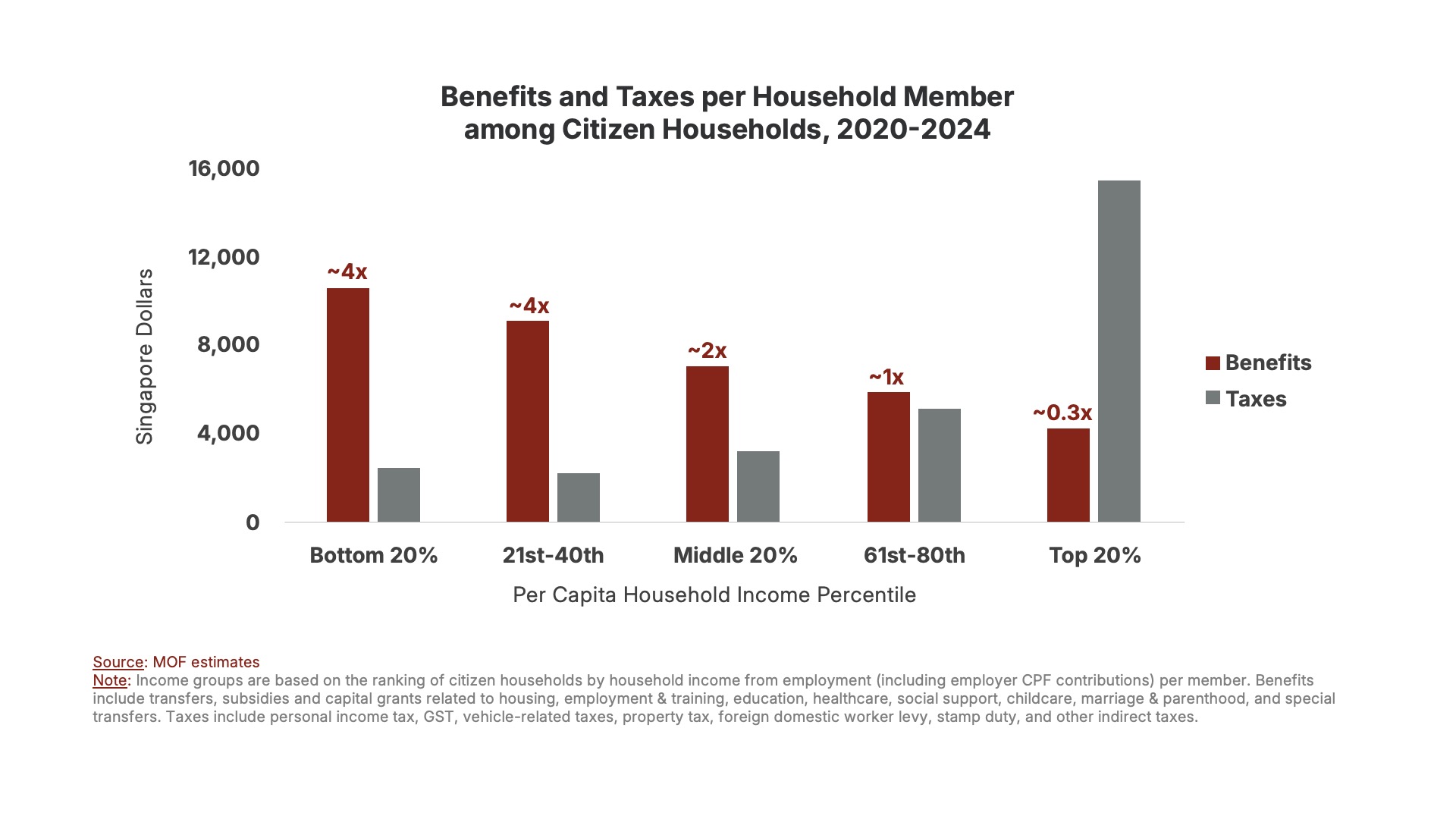
Over the years, we have also strengthened support for lower-wage workers, vulnerable seniors, and households with greater caregiving burdens, through programmes like Workfare and Silver Support.
How do we strengthen social mobility?
Our fiscal policies aim to provide a foundation of broad-based opportunities that enables everyone to earn their own success regardless of starting points. We redistribute resources in a way that enhances the capability of our people, and we provide more support for lower- and middle-income groups in the following areas:
Preschool and education – high-quality and accessible to all, so as to equalise opportunities when children are young, with extra resources allocated to students from disadvantaged backgrounds
Housing – to help families own their first homes
Workfare and the Matched Retirement Savings Scheme – to uplift lower-wage workers and seniors with less retirement adequacy
These efforts help Singaporeans have a better chance of moving up the income ladder than those in other advanced countries. For the 1985-1989 birth cohorts, 14.0% of those born to families from the lowest 20% by household income made it to the highest 20% by income.
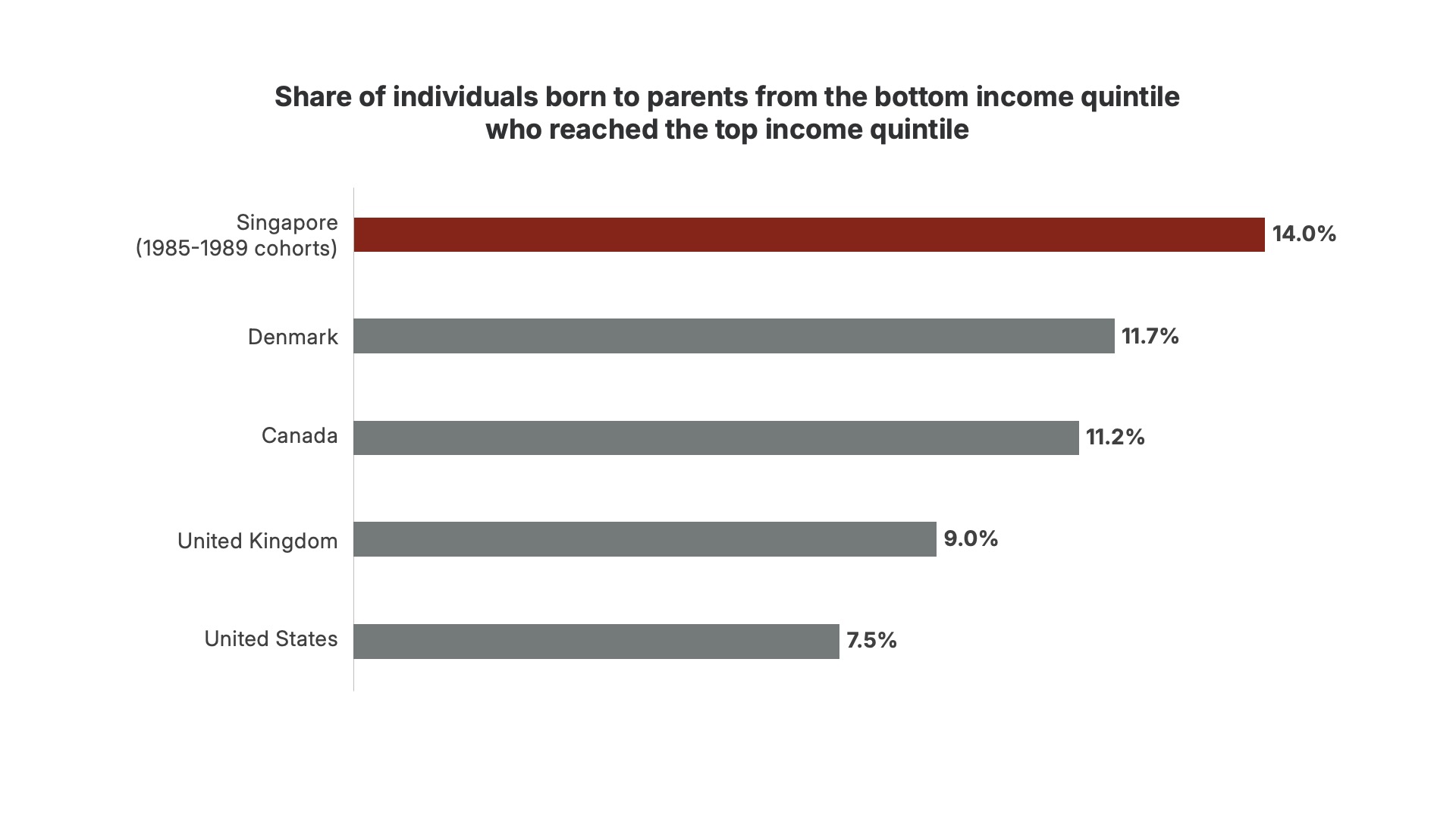
Source: MOF — Singapore; Chetty et al. (2014) — United States, United Kingdom, Denmark; Connolly et al. (2019) — Canada
Overall Fiscal Position (OFP)
Access documents and datasets on our Revenue, Expenditure and Overall Fiscal Position.

